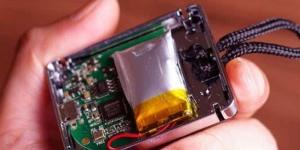Why do li ion batteries swell
Understanding Why Lithium-Ion Batteries Swell: Causes, Prevention, and Himax Electronics’ Solutions
Lithium-ion batteries are pivotal in powering a vast array of devices from smartphones to electric vehicles. However, users often encounter a common issue—battery swelling, which can compromise device functionality and safety. This article delves into the reasons behind lithium-ion battery swelling, explores preventive measures, and showcases how Himax Electronics is pioneering solutions to enhance battery safety.

What Causes Lithium-Ion Batteries to Swell?
-
Chemical Expansion:
-
Lithium-ion batteries function through the movement of lithium ions between the anode and cathode. During charge cycles, lithium ions intercalate into the anode, which can cause physical expansion. Similarly, cathode materials can undergo changes leading to volume expansion during battery discharge.
-
-
Gas Generation:
-
Battery swelling often results from gases generated within the cell. These gases form due to the decomposition of electrolytes or from moisture reacting with the battery’s electrolyte and electrode materials. This is more prevalent if the battery is exposed to improper charging techniques or environmental conditions that facilitate breakdown.
-
-
Thermal Runaway:
-
Excessive heat is a catalyst for chemical reactions inside the battery that contribute to gas generation. Heat can be produced from overcharging, high external temperatures, or internal faults within the battery, leading to a dangerous cycle known as thermal runaway.
-
Preventive Measures and Maintenance Tips
-
Proper Charging Practices:
-
Using a compatible charger and adhering to manufacturer-specified charging limits can prevent overcharging, one of the primary causes of swelling.
-
Avoid leaving devices charging overnight and ensure that charging environments are cool and ventilated.
-
-
Regular Monitoring and Maintenance:
-
Regularly inspect batteries for signs of damage or swelling. Early detection can prevent further damage or potential hazards.
-
Replace batteries at signs of wear or after the recommended number of charge cycles has been reached.
-
-
Storage Conditions:
-
Store lithium-ion batteries in cool, dry places to prevent exposure to conditions that could trigger swelling. Avoid temperature extremes, both hot and cold.
-
How Himax Electronics Enhances Battery Safety
At Himax Electronics, we are committed to advancing battery technology with a focus on safety and durability. Here’s how we address the issue of lithium-ion battery swelling:
-
Advanced Battery Management Systems (BMS):
-
Our state-of-the-art BMS technology closely monitors and controls the battery’s voltage, current, and temperature, ensuring that each cell within a battery pack operates within safe parameters. This system helps in mitigating the risks associated with overcharging and thermal runaway.
-
-
High-Quality Material Selection:
-
Himax Electronics uses superior electrode and electrolyte materials that minimize degenerative reactions which can lead to gas formation. Our materials are rigorously tested to ensure they meet the highest standards of safety and performance.
-
-
Innovative Design for Longevity:
-
Our batteries are designed with structural reinforcements that accommodate natural expansion without compromising the integrity of the battery. This design innovation significantly reduces the risk of swelling and extends the battery’s operational life.
-

Conclusion
Understanding the causes and preventive measures of lithium-ion battery(LI-ION BATTERY) swelling is essential for maintaining the safety and longevity of your devices. By adopting proper care and safety practices, users can significantly reduce the risk of swelling. At Himax Electronics, we continue to lead the industry in safe battery technology, offering products that are not only efficient but also align with the highest safety standards. For more information about our products and how we can assist in providing safe, reliable battery solutions, visit our website or contact our support team.



